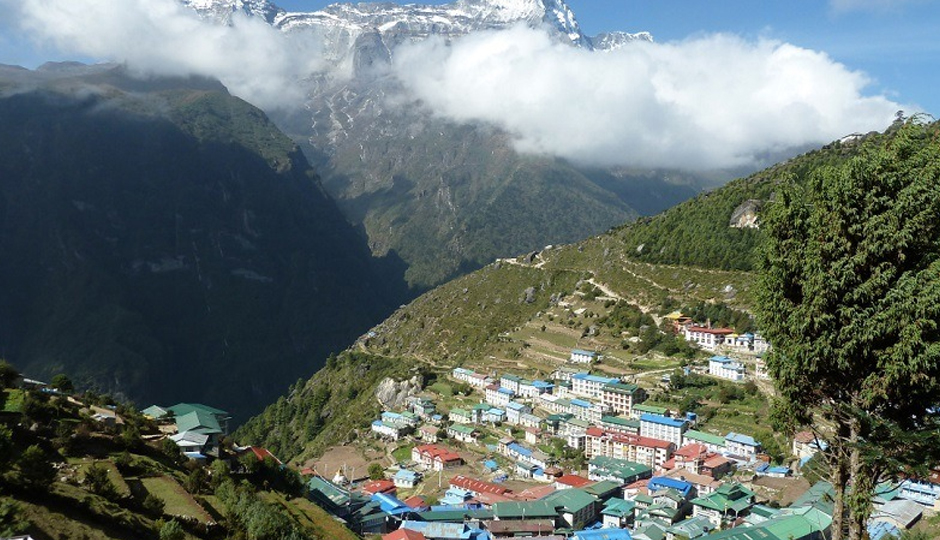8 Breathtaking Places To Explore In Ladakh
By: Priyanka Maheshwari Tue, 12 Sept 2023 10:05:02
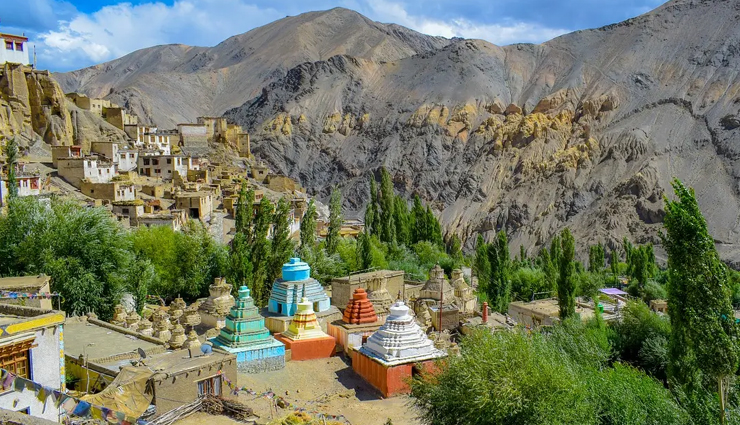
Ladakh seamlessly combines adventure pursuits with opportunities for relaxation, making it a destination that appeals to both thrill-seekers and those seeking leisurely vacations. This region, renowned for its lofty mountain passes, showcases an array of stunning features including pristine alpine lakes, ancient monasteries, awe-inspiring landscapes, and meandering crystalline streams. Ladakh boasts numerous top-notch attractions, making it an absolute paradise for nature enthusiasts, adrenaline junkies, and photography enthusiasts alike. Whether you're into exhilarating bike journeys, invigorating treks, peaceful camping experiences, or challenging mountaineering endeavors, Ladakh presents a diverse range of activities to captivate tourists.
Nestled amidst the formidable Himalayan range, Ladakh's Buddhist monasteries have stood for centuries as significant cultural hubs. They host religious festivals that offer a glimpse into the region's rich historical heritage. Additionally, Ladakh provides a plethora of heart-pounding activities that leave an indelible mark on anyone who embarks on a journey to this enchanting destination.
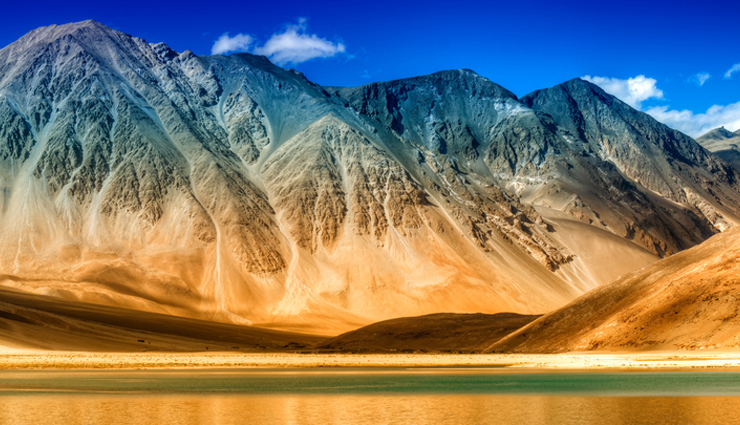
# Pangong Tso Lake
Perched at an altitude of 4,225 meters above sea level, Pangong Tso Lake graces the India-China border. This unspoiled, closed-basin lake spans an impressive length of 134 kilometers, stretching its watery expanse from India into China. The primary allure of this lake lies in its mesmerizing ability to transform its hue throughout the day, offering a unique experience as it reflects the imposing peaks that encircle it, all in a crystal-clear blue.
Pangong Tso is also a habitat for a variety of captivating migratory bird species, which can be spotted along its shoreline. During the unforgiving winters, the lake succumbs to freezing temperatures, becoming a solid icy surface. For adventure enthusiasts, camping along the lake's edge is an absolute joy, offering a remarkable experience.
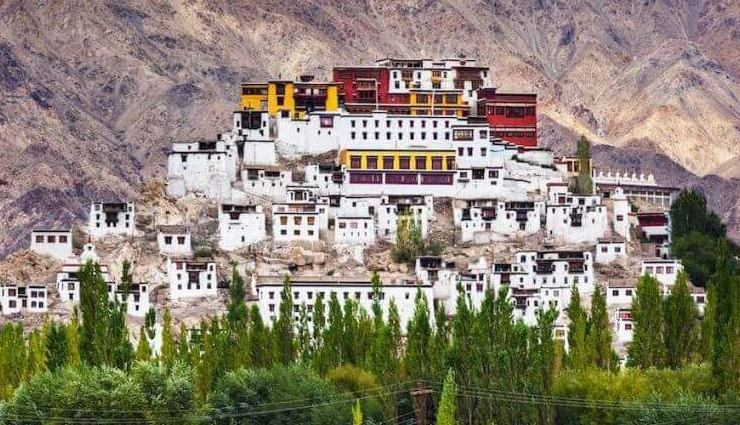
# Thiksey Monastery
Renowned for its striking resemblance to Tibet's Potala Palace, Thiksey Monastery holds a place of deep reverence among Buddhists in Ladakh. This monastic complex, crafted in the 15th century by Palden Zangpo, stands as the largest gompa in central Ladakh. At the heart of Thiksey Monastery's appeal lies the Maitreya Temple, constructed in 1970 to commemorate the 14th-century visit of the Dalai Lama.
Within the monastery's walls resides a colossal 15-meter-tall statue of Maitreya Buddha, an awe-inspiring masterpiece that is the largest of its kind in Ladakh, spanning two stories of the building. The Gustor Festival is a significant event hosted here, offering a vibrant showcase of the region's rich cultural heritage.
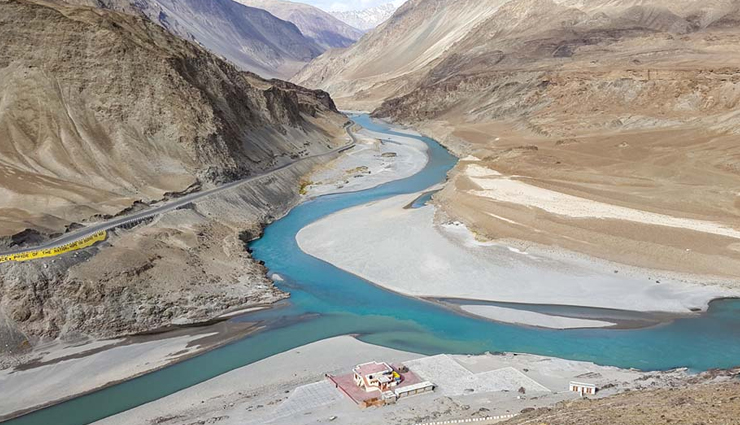
# Sangam Point
Commonly referred to as "Sangam" within the Leh region, the meeting point of the Indus and Zanskar Rivers stands as a renowned attraction for tourists in Leh. Amidst the stark and arid mountain terrain, two of Ladakh's prominent rivers converge at this location, providing visitors with a sight that borders on the divine. This unique confluence takes place in the Nimmu Valley, and the distinct colors of these two rivers are easily discernible.
One observes the gleaming blue waters of the Zanskar River, sourced from the Zanskar Valley, merging with the verdant-tinted Indus River, originating from the Indus Valley near the Mansarovar range in the majestic Himalayas. The period between March and May offers the most optimal opportunity to witness the vivid colors of these rivers in their full glory.
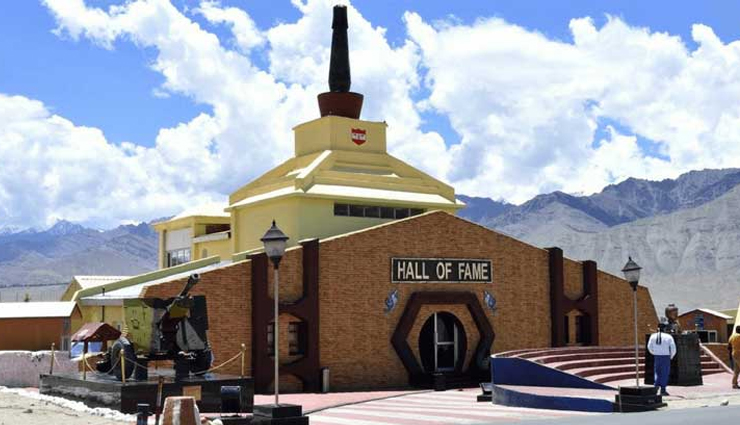
# Hall of Fame Museum
The Hall of Fame Museum in Leh, erected by the Indian Army as a tribute to the courageous Indian soldiers who made the ultimate sacrifice for their nation, serves as a poignant reminder of their valor. This museum is divided into two stories, each featuring distinct sections.
The upper floor houses the "OP Vijay Gallery," which showcases the weaponry and munitions captured and utilized during the Kargil War. Here, visitors can view images depicting the training procedures, accommodations, and army outposts situated on the distant glaciers. On another level, you'll find a display of photographs related to the Kargil War, providing insights into the historical context.
For a deeper understanding of Operation Vijay, a documentary is screened on the ground floor, allowing visitors to witness the extraordinary courage displayed by Indian soldiers during the war.
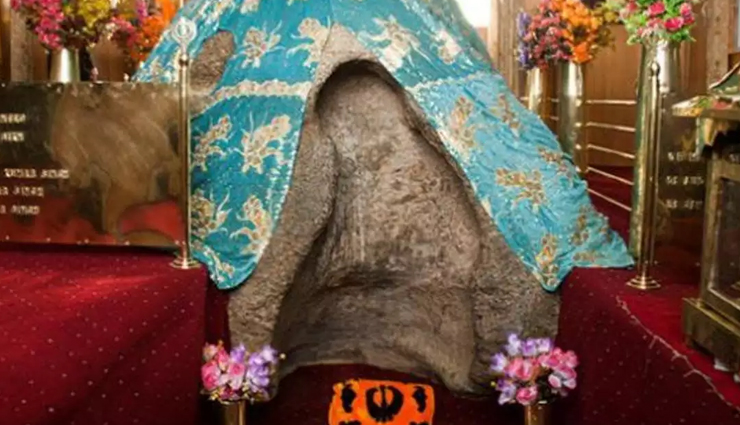
# Gurudwara Pathar Sahib
Nestled amidst the imposing Himalayan landscape in Ladakh, you'll find Gurudwara Pathar Sahib, a sacred place dedicated to Guru Nanak Dev Ji, the revered founder of Sikhism. Although Ladakh is primarily known as a Buddhist region, this Gurdwara holds a special place of reverence and importance across all faiths in the area.
According to local legends, during his visit, Guru Nanak Dev Ji encountered a hostile encounter with demons who hurled a massive boulder at him while he was deep in meditation at the foot of a hill. To everyone's astonishment, the rock, upon striking the Guru, miraculously turned as pliable as molten wax, failing to inflict any harm upon the Sikh Guru. This extraordinary event led the demon to recognize Guru Nanak Dev as a divine being. Subsequently, the demon ceased his harassment, bringing relief to both the Guru and the local townspeople.
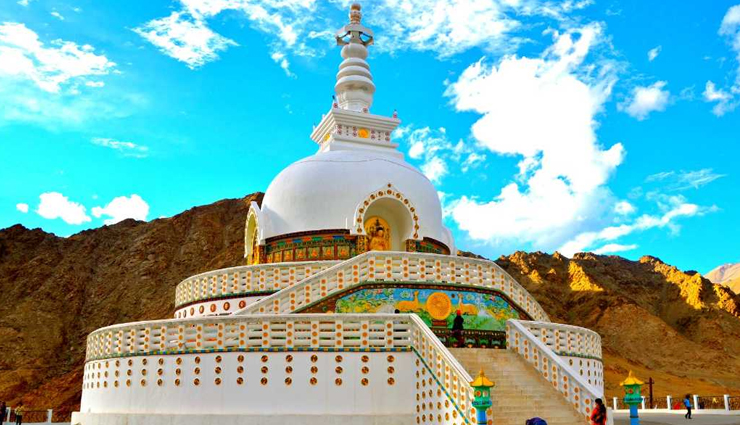
# Shanti Stupa
Perched atop a steep hill, the Shanti Stupa stands as a magnificent Buddhist monument characterized by its gleaming white dome. This site holds profound religious significance for Buddhists, as it enshrines relics of Buddha that were consecrated by the 14th Dalai Lama. From the Shanti Stupa complex, visitors can revel in a panoramic view of Leh city from a bird's-eye perspective while immersing themselves in the serene ambiance of the surroundings.
For those in search of tranquility and photography enthusiasts, Shanti Stupa serves as an ideal destination in Ladakh. Located in Changspa Village, this sacred structure was erected in 1991 by Japanese Buddhist monk Bhikshu Gyomyo Nakamura. Its construction commemorates 2500 years of Buddhism and is dedicated to the promotion of world peace. This stupa is an integral part of the peace pagoda mission, which seeks to disseminate harmony through the teachings of Buddha.
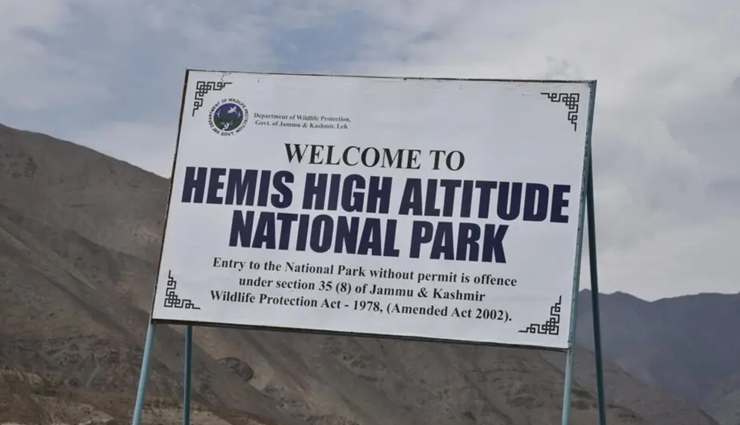
# Hemis National Park
Nestled in the eastern expanse of Ladakh, Hemis National Park serves as a sanctuary for a variety of rare and endangered wildlife species. Covering an impressive area of 4,400 square kilometers, it ranks among the largest national parks in South Asia, making it the most extensive contiguous protected region after the Nanda Devi Biosphere Reserve. The park encompasses several monasteries (gompas) and villages within its boundaries.
Hemis National Park stands as a secure habitat for numerous endangered creatures, including the elusive snow leopard, the Asiatic ibex, the Tibetan wolf, the Eurasian brown bear, and the red fox. It is renowned for its Snow Leopard treks, during which enthusiasts have the opportunity to spot these elusive creatures along with other fascinating wildlife species. As such, it has become a must-visit destination in Ladakh for adventure seekers, offering popular activities like camping and trekking.
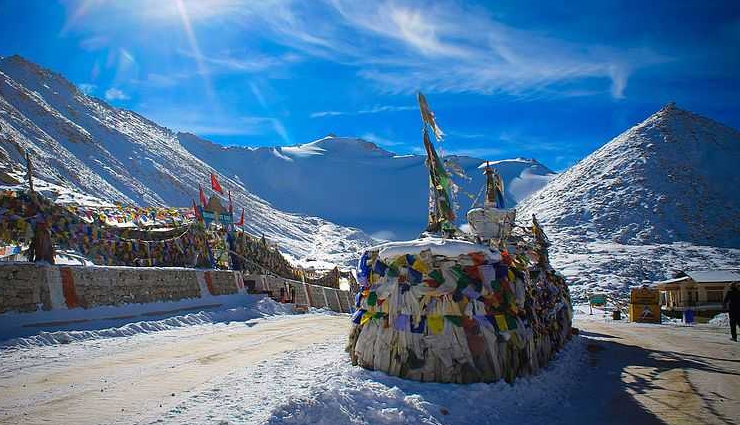
# Khardung La Pass
Situated at a staggering altitude of 5,349 meters above sea level, Khardung La Pass ranks among the world's loftiest drivable routes. This high-altitude mountain pass serves as a vital link between Leh and the Shyok and Nubra Valleys. Venturing across these towering passes offers an unparalleled and indescribable sense of exhilaration.
From the summit of Khardung La Pass, visitors can relish breathtaking vistas of the snow-draped Himalayan peaks, a sight that can etch an unforgettable memory into their Ladakh journey. It stands out as one of the prime destinations to explore in Ladakh, whether with family or friends. Embarking on a motorcycle expedition to Khardung La Pass is a heart-pounding experience that can be shared and cherished with loved ones.





